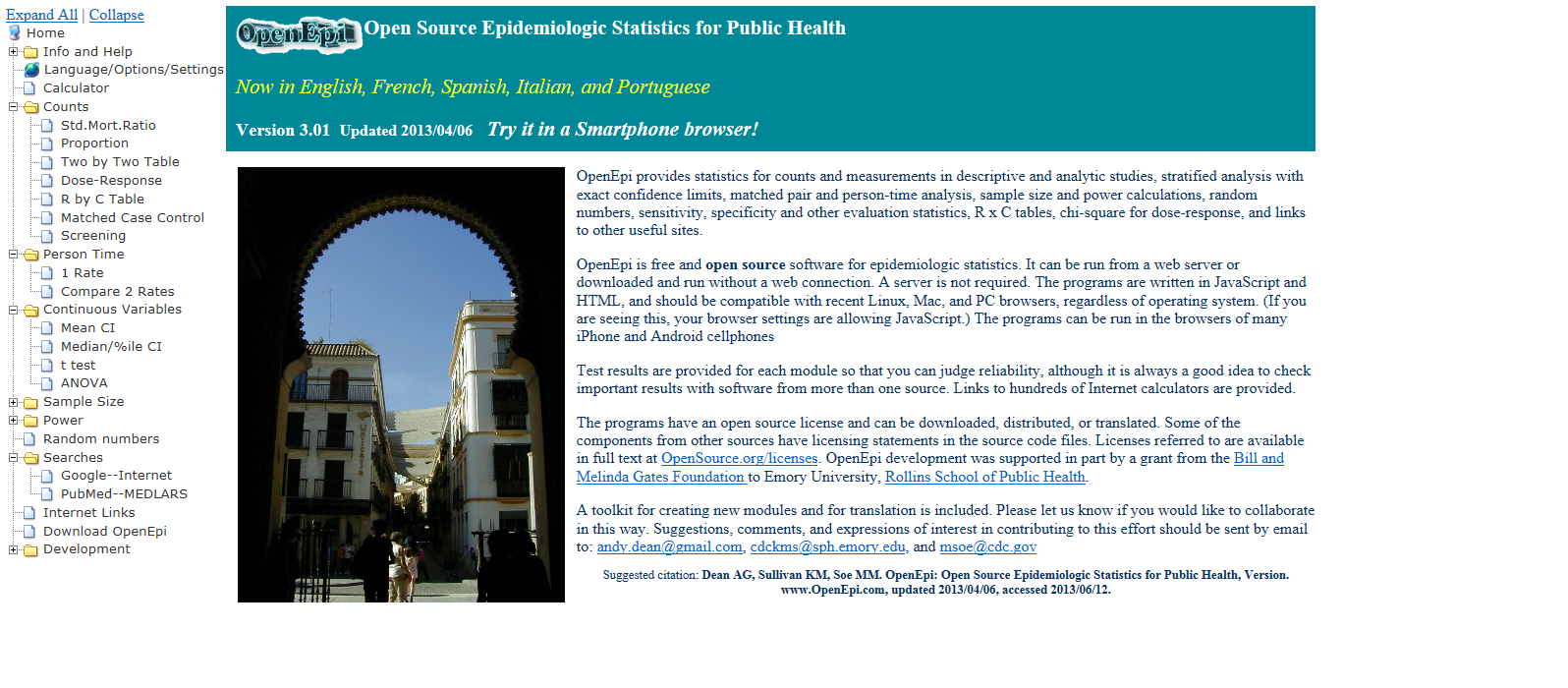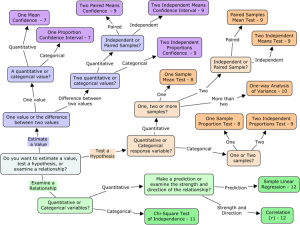

Population survey or descriptive study (For simple random sampling, leave design effect and clusters equal to 1.)

As StatCalc calculators do not access data records and process only data entered manually by the user, calculators can be added to a canvas without having to first attach a data source. In VD, the calculators can be accessed from the Options menu, under the "Add StatCalc calculator" submenu, and added to the dashboard Canvas in the same manner as other gadgets. The individual calculators are also part of Visual Dashboard (VD).

StatCalc appears on the Epi Info™ 7 main menu, middle row, right column, and is captioned "Statistical calculators for sample size, power, and more." Clicking on StatCalc in the main menu opens the StatCalc menu, which is similar to the main menu in appearance and contains buttons for the eight (8) StatCalc calculators listed in StatCalc Calculator Properties, below. The StatCalc tools can be accessed as an independent module from the main menu or as part of the Visual Dashboard.

distribution-based event probabilities, 2-tailed p-values and confidence intervals for deviations from binomial (proportions) and Poisson (rare events) distributions given the number of observed and expected events. analysis of 2×2 tables to produce odds ratios and risk ratios (relative risks) with confidence limits, Fisher exact tests, and 1- and 2-tailed p-values, with Mantel-Haenszel summary odds ratios, chi square tests and associated p-values for stratified data 3).
#Statcalc online series#
sample size and power calculations for unmatched case-control studies, population surveys, cohort or cross-sectional studies, chi-square for trend by the Mantel extension of the Mantel-Haenszel summary odds ratio, and chi square (tests for the presence of a trend in dose-response or other case-control studies where a series of increasing or decreasing exposures is being studied) 2). StatCalc tools can be divided into three broad categories: 1). The StatCalc component of Epi Info™ 7 enables the user to evaluate the performance of different study designs and statistical tests by supplying high-level information on the properties of hypothetical data sets and the criteria used for evaluation.


 0 kommentar(er)
0 kommentar(er)
